If you are searching for plants that repel flies but before that let me tell you flies, insect, pests are everywhere but if we choose somethings naturally that can keep those flies away that could be more help. In our article i have discussed about all those plants that plays a major role in preventing flies.
Plants that repel flies including Marigolds, Chrysanthemums, Nasturtiums, Four O’Clocks ,Lantana ,Lavender ,Tansies ,Lemon Thyme ,Geranium ,Basil etc. These indoor and outdoor plants keep flies away naturally with the smell as some flies hates it. People always ask about what plant keep flies away because these can be a huge inconvenience in your home. It is one of the most common household problems that almost everyone faces. People use different methods to repel them, such as coils, electronic devices, etc. While some of them are helpful, they are not guaranteed to last for a long time. However, the best option is to choose plants that repel flies. They keep you close to nature while also keeping your house simultaneously.
But, what are those plants that repel flies? No need to worry because we have covered 25 of those in this detailed article to make the selection easier.
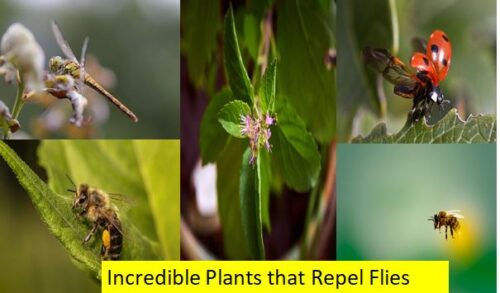
Plants that Repel flies
- Marigolds
- Chrysanthemums
- Nasturtiums
- Four O’Clocks
- Lantana
- Lavender
- Tansies
- Lemon Thyme
- Geranium
- Basil
- Mint
- Allium
- Bay Leaves
- Floss Flowers
- Parsley
- Venus Fly Trap
- Catnip
- Pitcher Plant
- Rosemary
- Sage
- Pennyroyal
- Lemongrass
- Petunias
- Rue
- Wormwood
1. Marigold
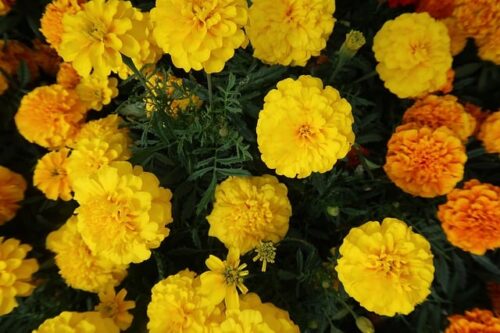
If you want to have a plant that maintains the aesthetic look of the place, Marigolds is the best choice. It has a scent that is unpleasant to flies, thus warding them off the house vicinity.
Marigolds are an excellent choice if you have a house garden. They release a compound called ‘Limonene.’ It deters whiteflies, which can harm your tomatoes.
Moreover, Potted Marigolds are easy to place anywhere. It is recommended to keep them at the entry points of your house. This way, flies will not be able to enter.
| Name | Marigold |
| Type | Herbaceous plants |
| Family | Asteraceae |
| Height | 7 to 6 feet tall Depend on Variety |
2. Chrysanthemums
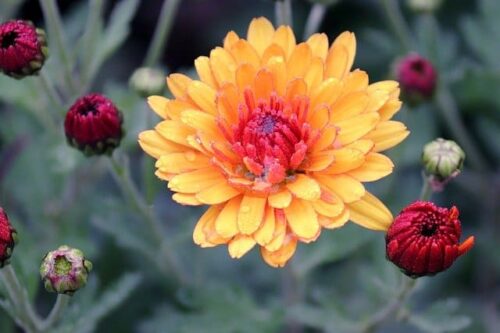
Chrysanthemums are very popular, thanks to their beautiful look and useful properties. They can keep the flies away from the house, but that’s not enough. These plants also repel pests, including spider mites, aphids, fleas, ticks, and roaches.
Chrysanthemums release Pyrethrum, which is toxic to both jumping and flying insects. All you need is to place these plants in a sunny area. They require rich soil to survive, and they bloom the best during the fall.
| Name | Chrysanthemums |
| Plant Type | Perennial |
| Family | Asteraceae |
| Native | Northeastern Europe ,East Asia |
| USDA Zone | 5-9 |
| HEIGHT | Over 3 feet |
3. Nasturtiums
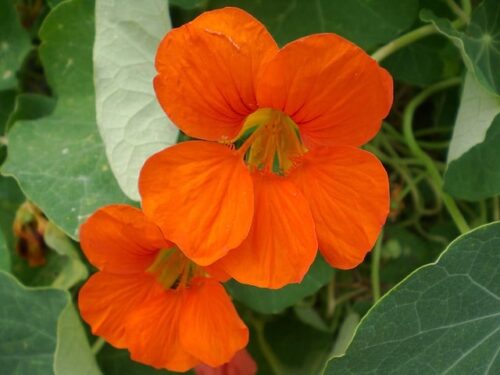
If you have a garden in your house vicinity, you need to be even more careful. Vegetable plants, such as cucumbers and tomatoes are extremely vulnerable to flies and pests. Various species, such as Squash bugs, Woolly Aphids, and Cucumber beetles, can pose a threat to your garden.
However, this can all be cleared by planting Nasturtiums. As one of the best plants that repel flies, they can keep all kinds of flying insects away from the place. Plus, they release a compound that can also be helpful for your vegetable growth.
The best part about these plants is that they are easy to grow. They can be kept in containers of all shapes with well-drained soil. Nasturtiums can grow in partial to full shade.
They also come in a variety of colours, including bright red, orange, and yellow. You can pick the one that fits the best with your house aesthetics.
| Name | Nasturtiums |
| Plant Type | Annual and Perennial |
| Family | Tropaeolaceae |
| Native | South America and Central America |
| USDA Zone | 5-9 |
| HEIGHT | 6 inch to 3 feet |
4. Four O’Clocks
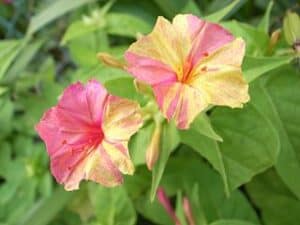
If you want to keep the beetles away, there is no plant better than Four O’Clocks. Surprisingly, they are the main food source for Japanese beetles. However, all the foliage in this plant is poisonous. Thus, the Beatles die quickly and efficiently.
Their effect is not restricted to beetles only. Four O’Clocks attract all kinds of insects and flies. They are considered an excellent bait to keep around your house. They can be used for house gardens or simple house protection from flies.
One thing to note is that these plants are also toxic to both humans and domesticated animals. Hence, it would be best to keep them safe from pets and children.
| Name | Four O’Clocks |
| Plant Type | Perennial |
| Family | Nyctaginaceae |
| Native | Tropical South America |
| USDA Zone | 7-10 |
| HEIGHT | 2-3 feet tall |
5. Lantana
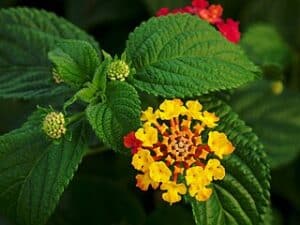
Lantana is a small beautiful flower, very effective against mosquitos, flies, and other insects. Like most other plants that repel flies, they attract their target to kill them. But, the best part is that they will also keep your place fresh with their beauty.
That is mostly due to their pretty look. Plus, they can be contained easily in a basket. Lantana also attracts pollinators, like butterflies, that enhance the beautiful look of a garden.
They are one of the most poisonous flowers that you can have in your house. Thus, you should also keep them away from your pets and children. Lantana comes in a range of colours, such as pink, red, and purple.
6. Lavender
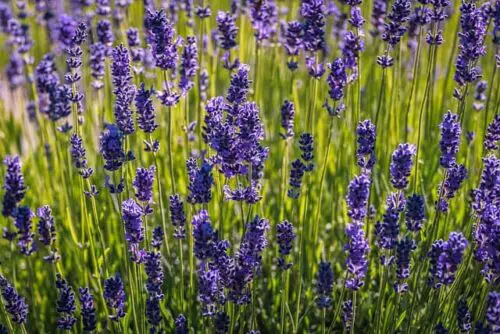
Unlike many other plants that repel flies, Lavender has a sweet scent. It is also a very beautiful flowering plant you can have in your home. It repels mosquitos, gnats, flies. That’s because the sweet scent can be very unpleasant to insects.
Lavenders are usually kept in collective forms. For instance, a small bouquet can be an excellent as well as convenient option. This way, you can also keep them in your home. It is a plant that dries very well.
Lavender also produces oil which is used as a pesticide. Thus, it is safe to conclude that Lavender is a beautiful and ultimate flies killer.
7. Tansies
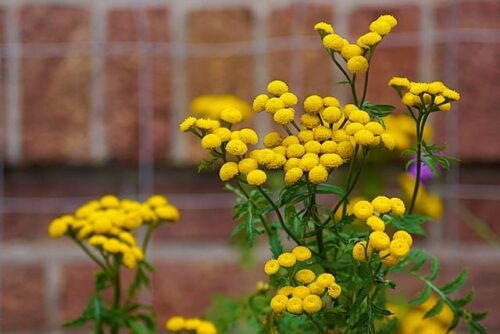
Tansies are one of the most attractive plants that repel flies. They are also widely used to protect gardens growing vegetables. That is because Tansies are deadly for cucumber beetles, mosquitos, Japanese beetles, squash bugs, and many other insects.
Tansies are also very easy to keep in your home. They can grow really tall real quick. Their maximum size is six feet, but they can be kept under three feet.
Besides being deadly for insects, Tansies are also poisonous to livestock. Their seeds can spread and grow across the entire yard.
If you want to have a fully-grown tansies flowering plant, make sure to keep it in rich soil and full sun.
8. Lemon Thyme
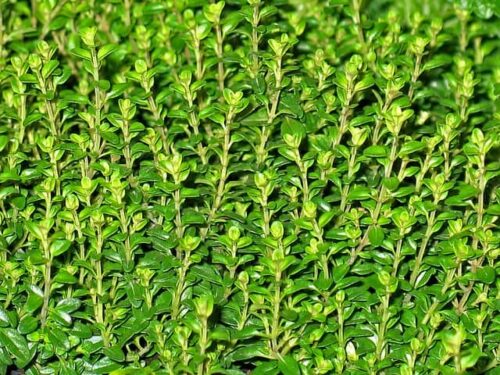
Lemon Thyme is a strong herb that can survive all types of soils. It can grow in rocky, dry, and shallow soil. It is very thriving and can take on any environment. The best part about lemon thyme is that it requires low maintenance compared to other plants that repel flies.
To keep the flies at bay, you have to crush a few plants’ leaves. It releases a citrus scent that kills both pests and insects. Its effects last for hours, and Lemon Thyme can grow all year-round.
These herbs are also used in cooking. Their dark and lime green foliage with oval leaves can fit both indoors and outdoors.
9. Geranium

If you want to add a bright and cheerful factor to your house, Geranium is the best choice for you. They can grow all year round indoors under the right conditions.
If you have no experience with plants, Geraniums might be the right place to start. They do not dry out easily. Plus, they can grow in all light conditions, whether partial or full shade.
Their soil drains well too. However, it is recommended to grow them in an all-purpose potting mix. Geraniums produce a lemon-tinged fragrance that is fatal for snails, beetles, flies, and slugs.
Geraniums are often grown with cabbage and tomatoes. You can find them in several colours, including white, burgundy, orange, and red.
10. Basil
Basil is one of the most popular plants that repel flies. But, it is also well-known for other reasons, most importantly, different dishes. Basil instantly kills insects with its repellent nature. Thus, flies and mosquitos stay far away from these herbs.
Many insect repellent sprays are available in the market, but only a few work. You can make one yourself by pouring some water into some Basil leaves. Using the spray, you can keep mosquitos, thrips, and flies off your house.
It is one of the few plants that can grow quickly and easily. That is mainly because Basil can thrive in several lighting conditions.
The herb is also very popular for Italian cuisines. It is used for cooking after drying the leaves for some time.
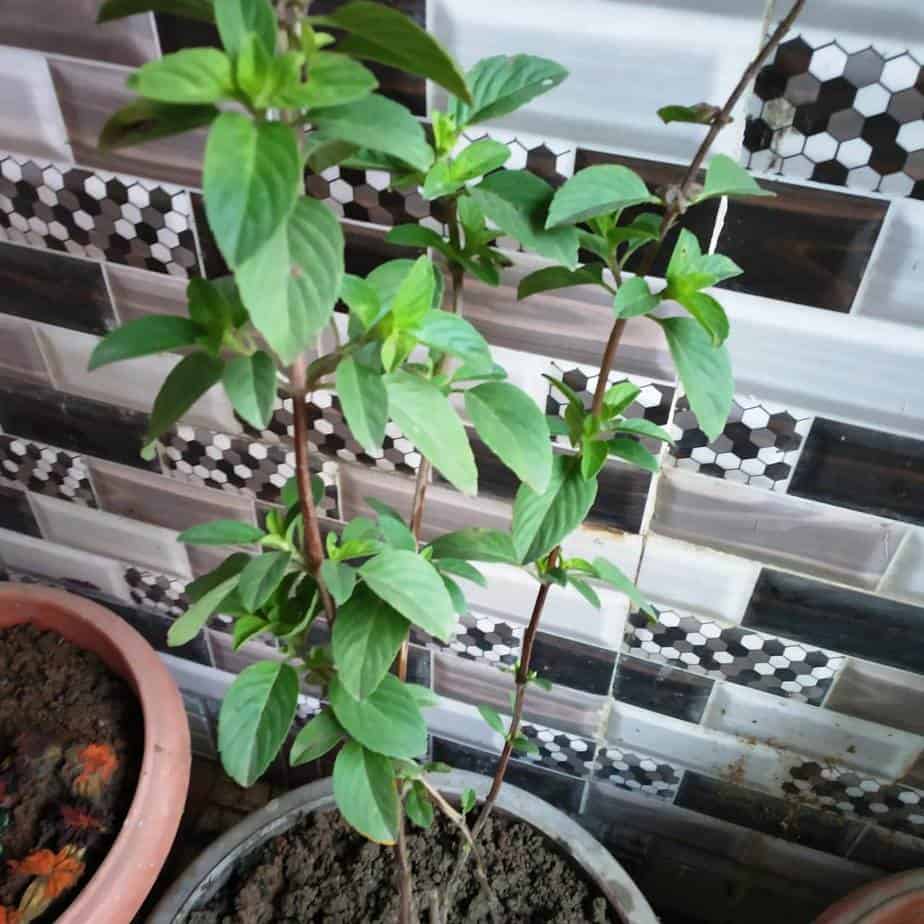
11. Mint

Mint is easily the most common one on this list of plants that repel flies. It is also used for several other purposes. The main use of mint is to purify the smell. And for that, it is used in bubble gums, cuisines, teas, etc.
However, Mint is also a very powerful fly repeller. You can grow them in small or medium pots and ensure the protection of your home from flies.
But, you can increase its power by mixing apple cider vinegar. You can also replace the vinegar with witch hazel. Either way, you get the full effects of mint as a fly repellent.
It is not recommended to grow mint on the ground since it is an aggressive grower. It can also take over other plants around it.
12. Allium

Looking for an eye-catchy plant that repels flies? No need to look further than Allium. It has appealing round flower heads with a thin stalk. It can be up to six feet high.
Allium has a strong smell that repels a range of different insects. These include flies, mosquitos, and aphids.
Moreover, Allium grows well with potatoes, tomatoes, carrots, cabbage, and kohlrabi. But, the best part about it is that it is easy to take care of. You will need rich soil and moderate watering to grow this plant.
To get the perfect Allium look, you should grow them in the backyard or front garden of your home.
13. Bay Leaves

Besides being popular for spaghetti sauces and soups, Bay leaves also repel flies. You do not need to grow a full-plant to benefit from its effects. You can buy these leaves individually and spread them around your home. Make sure to buy dried leaves for full protection from fleas, ants, cockroaches, and flies.
Their smell can be a problem for some people because it is very intense. However, it fades away after a few days from the dried leaves.
However, if you do want to grow bay leaves, you can do so easily. They can grow in both full and part shades.
14. Floss Flowers

Although they are not the most effective plants that repel flies, Floss flowers can still be very useful. They produce a chemical compound, Coumarine. It is the same compound used in mosquito, bug, and fly repellent sprays.
They come in a range of sizes as well. You can get the smaller ones to plant in your garden outside or in your home. They bloom during the Summer and Fall months with fertile soil.
These flowers look good in a bouquet. Also, they attract a lot of butterflies and hummingbirds. So, you can rely on Foss Flowers to make your garden even more beautiful.
15. Parsley
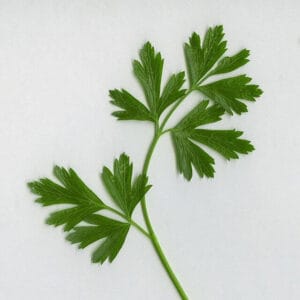
You might know Parsley as a healthy food source. However, it is also a plant that repels flies. They require rich soil but will grow brilliantly in an all-purpose potting mix. Note that the potting should remain moist.
The unique part about Parsley is that it attracts Predatory Bugs. These are insects that eat other insects. These can include flies, beetles, etc. It also repels other bugs, including snails.
Wasps find Parsley quite attractive. Thus, if someone in your house is allergic to wasps, make sure to plant Parsley at a safe place.
16. Venus Fly Trap

One of the deadliest plants that repel flies is the Venus fly trap. As its name suggests, it repels flies. However, it is also used to keep ticks away. It is a carnivorous plant that is grown for both homes and gardens.
It has mouth-like leaves, which are called its traps. They kill an insect as soon as it sits on the trap. They can kill insects of several sizes as long as they fit into their leaves.
Venus fly traps kill insects instantly and open their leaves back when they have digested a fly. They can be grown both indoors and outdoors. They only need moderate sunlight and acidic soil. If you provide good drainage, you can get these plants to last forever.
Although they are carnivorous plants, they do not need meals constantly. They can go up to two months between food.
11 Ways to Get Rid of HoverFlies – (Why They Are In My Patio)
17. Catnip

Catnip is a member of the Mint family. It is a herb that can repel flies, ticks, mosquitos, and cockroaches. They come in various shades of purple. Plus, catnips are easy to grow. They do not require anything much, except for occasional watering.
Their maximum size can be up to four feet tall. Their purple flowers give your garden a unique aesthetic.
Although they can be planted to repel flies, you can also use them as a repellent. Dry catnips are sprinkled around a vicinity to keep it safe from flies and other insects.
The herb got its name from a unique property. Catnip attracts cats due to Nepetalactone. It is a chemical compound that attracts feline friends while keeping the flies at bay at the same time.
18. Pitcher Plant

The pitcher is another carnivorous plant that repels flies. Not only that, but it also kills insects for food. The best part is that it does not require a lot to grow. All you need is to water it occasionally, and it will show results.
The pitcher is named after its body. It has a U-shaped pitcher full of nectar. The slippery surface is covered by downward-facing hair. When a fly enters into the pitcher, it dies of exhaustion. And, there is no way for the insects to come out. Thus, they stay far away from this carnivorous plant.
You can keep it in partial shade as it does not need full sun to survive. Also, keep the soil moist for its best effects. Usually, people keep pitchers in a hanging basket as it can repel flying insects too, such as wasps, bees, etc.
19. Rosemary

As the name suggests, Rosemary is a herb in this list of plants that repel flies. It grows fresh herbs that are used for cooking purposes. However, Rosemary also has strong effects against flies.
It also works for bugs. Rosemary produces an oil that is used as a diffuser. You can drop it around your house to keep little insects away.
Rosemary has a strong natural scent which is unpleasant for flies. But, its green herbs look very good in a plant.
These herbs can be grown in dry as well as hot climates. That is because they like full sun with sandy soil. Therefore, it is also easy to grow this plant in containers. This way, they can also be kept indoors.
20. Sage
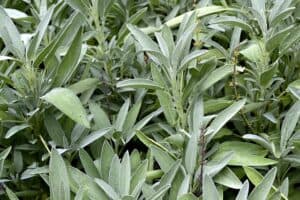
If you know a thing or two about plants that repel flies, the chances are that you already know Sage. It is a very popular plant that is often used for landscapes and gardens. There are different ways you can use Sage as a repeller.
Firstly, it releases a powerful scent that repels all kinds of insects. It is only produced when the leaves are on the stem. However, you can crush them to release the scent yourself.
Another way is to burn Sage leaves. It is a very effective method to keep flies and insects away from your home or garden. The plant requires a decent amount of sunlight and does well in containers.
It works the best with slightly moist soil that drains. You will find Sage in deep green colours with large leaves. But, it does not get very tall with its age.
21. Pennyroyal
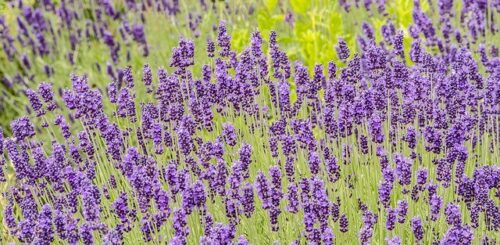
Mostly, people have seen Pennyroyal, but they do not know the right name. It is one of the most common plants that repel flies. The plant can be used as a repellent as well as for decoration.
But, it can have some side effects. Pennyroyal releases oil that can leave marks on your clothing. Although they can be removed, make sure never to ingest the oil. It is a low-growing plant that can grow in containers too.
It is a part of the mint family and grows with partial shade. It requires rich soil that drains well. Pennyroyal will become invasive if you do not prune them back.
If you want to get the best results, water the plant regularly. Note that since it has a poisonous oil, it should be kept away from pets and children.
22. Lemongrass
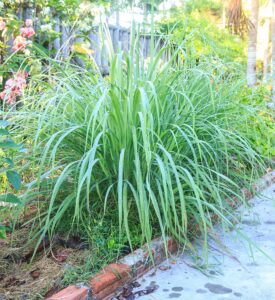
Lemongrass is one of the tallest plants that repel flies. It is a citronella plant native to Asia. It can grow up to four feet wide in only five months. Lemongrass produces natural oil that can repel both flies and mosquitos.
It does well as large plants that can move around if you need. It is also used for cooking soups, salads, and many other dishes. It is used in both fresh and dried forms.
Lemongrass is usually planted at walkaways. You will also find them in parks, front yards, and seating areas.
23. Petunias
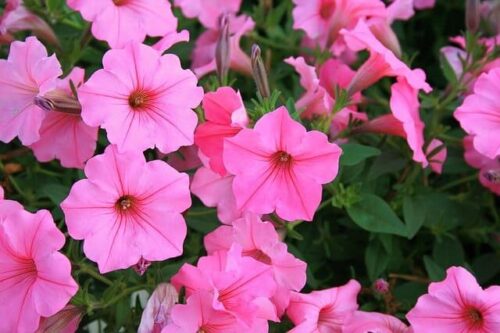
Petunias are one of the prettiest plants that repel flies. They are colourful and cheer up the entire garden. They come in a bright and vibrant purple colour full of life. Petunias can do well in hanging baskets, flower beds, and containers.
The plant can repel flies as well as many other insects. These include both small and large insects. And the best part is that they do not require a lot of maintenance.
They can thrive in various conditions and need full sun to grow. They are usually planted in vegetable gardens as companion plants. Petunias require minimal water and rich soil with good drainage.
24. Rue
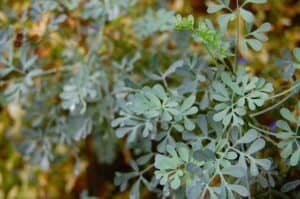
Rue is one of the best scented plants that repel flies. It has a very strong scent that insects find unpleasant. Rues grow the best in the natural environment. They possess potent, potent properties.
They can also be harmful to allergic people. Their leaves can cause blisters if they rub an allergic person’s skin. Rue can grow up to two feet high under a range of soil conditions. It is easy to grow as it can even grow with poor soil.
The plant grows from full sun to partial shade. It is best to seed Rue in the spring. This way, you can reseed it every year. Plus, it fits well with the spring aesthetics. Thanks to its bright blue-green leaves, the plant looks beautiful in a garden. But, that’s not to say that you can not plant it outside your house.
25. Wormwood

Wormwood is a plant that repels flies and rabbits. Yes, you read that right. The plant has this unusual property due to its chemical compound. Resinous particle is found inside Wormwoods and is a natural insecticide.
Another benefit is that you can pick it and rub it on your clothes. This keeps the flies and insects away from you. Another way to use wormwood is in its dry form. You can hang it in your house to keep the vicinity clean from flies.
Wormwood is also used in making medicines but also has some side effects. However, if you are not ingesting it in large quantities, there’s nothing you should worry about.
Wormwoods are easy to grow and like full to partial sun. They require well-drained soil and routine watering.
Different Types of Flies
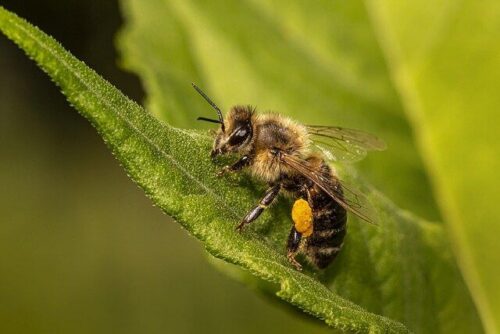
Before going into the details, it is important to know the different types of flies. They are classified into various species. These can often be found indoors temporarily. On the other hand, some species reproduce indoors.
Although there are many types of flies, we are only looking at the ones found in your homes.
- Cluster Flies are easily the most common types of flies found indoors during cool months. They are particularly abundant in higher elevation areas. They have a moderate size and dark grey colour.
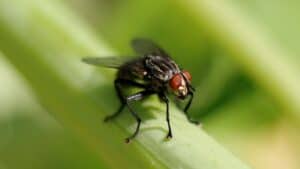
- Blow Flies are commonly found in homes. They are comparatively larger and have a metallic grey color.
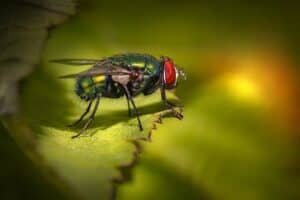
- House Flies are not as common as the other two. However, they are still considered the most house-infesting species.
Some other types of flies are:
- Moth fly
- A picture winged fly
- Fungus gnat
- Small fruit fly
- Little house fly
- Humped back fly
Flies in Backyard Impact on Health
Many people do not consider flies a health threat. Usually, people think these little insects cause no diseases. However, that might be wrong because flies can cause several infections and harm one’s health in many ways.
For instance, many species feed off the food that humans eat. These can include fruits and vegetables. Thus, leaving their infections behind for anyone who comes in contact with these items.
Secondly, their sting can also lead to several enteric infections. These include dysentery, typhoid, certain helminth infections, cholera, diarrhoea.
The threat does not end there. There are also risks for eye infections involved with these flies, such as epidemic conjunctivitis and trachoma.
Most of these diseases and viruses can be spread to other people. In short, your entire family can be at risk if you do not tread carefully with flies.
Final thoughts
And, that brings us to the end of this detailed guide on 25 plants that repel flies. Along with listing and describing all 25 plants, we have also covered several relevant topics. This guide will help you understand the importance of protection against flies and which plant to choose. Make sure to consider your available space and area type to pick the right plant. It is also important to note your requirements before making the ultimate decision.
Also See:
Elephant Ear Plant leaves Turning Yellow – Why and How to Fix
30 Incredible Plants That Produce Oxygen at Night(Or 24 hours)
What Does An Eggplant Look Like – (Its Gone bad, Ok To Eat?)
16 Vegetables That Are Actually Fruits – Never get Mistaken Again
